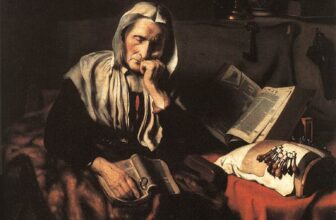
The Birth of Venus Painting by Alexandre Cabanel
Alexandre Cabanel’s 1863 masterpiece, The Birth of Venus, is a hallmark of 19th century academic art, celebrated for its extremely delicate beauty, sensuality, and technical mastery. Though it shares its title with Sandro Botticelli’s more famous Renaissance painting, Cabanel’s interpretation reflects a distinctly different artistic era and vision. To understand the meaning and significance of Cabanel’s The Birth of Venus, one must delve into the historical context, artistic style, subject matter, and enduring cultural impact of this exquisite work.
What Is Happening in The Birth of Venus by Cabanel?
In Cabanel’s painting, the goddess Venus, also known as Aphrodite in Greek mythology, is portrayed at the moment of her mythical birth from the sea. According to myth, Venus emerged fully grown from the sea foam and was carried to the shore on a shell. However, Cabanel’s depiction diverges from a literal interpretation of the myth. Instead of focusing on the shell or the moment of arrival, the painting presents Venus reclining on the undulating surface of the ocean, with her long, flowing hair partially veiling her nudity.
The goddess appears asleep or in a trance-like state, suggesting innocence, purity, and divine beauty. Cherubic putti (winged baby angels) flutter in the skies above, celebrating her arrival and enhancing the painting’s dreamlike, otherworldly ambiance. The waves surrounding her are gentle and serene, further emphasizing the calm, ethereal mood. The figure of Venus dominates the composition, drawing the viewer’s gaze to her delicate features and graceful form.
Who Is the Woman in The Birth of Venus Painting by Cabanel?
The woman depicted in Cabanel’s painting is the Roman goddess Venus, the deity of love, beauty, and desire. Her mythological origin as a sea-born goddess makes her a powerful symbol of creation and sensuality. In Cabanel’s rendition, Venus is the embodiment of idealized feminine beauty, not a specific individual but rather a personification of divine perfection.
Though she is a mythological figure, the model for Venus was likely a contemporary woman whose identity remains uncertain. In academic art, especially during the 19th century, artists often used anonymous models to represent mythological or allegorical figures. Venus’s relaxed pose, gentle curves, and serene expression reflect the era’s standards of feminine allure, which Cabanel captured with extraordinary finesse.
What Is the Meaning of The Birth of Venus by Cabanel?
Cabanel’s The Birth of Venus explores themes of beauty, sensuality, and divine origin. It is both an aesthetic celebration of the female form and a reflection of Romantic ideals of mythology and emotion. Unlike Botticelli’s Venus, who stands poised and modestly covers herself, Cabanel’s Venus reclines openly, yet without shame, suggesting a different cultural relationship with nudity and sensuality.
The painting also represents the 19th-century French academic tradition’s focus on mythological subjects as a means to explore human emotion, ideals, and morality in a socially acceptable context. By portraying Venus as a divine and mythological figure, Cabanel was able to explore themes of eroticism and physical beauty without violating the era’s moral codes. His Venus is sensual but not explicit, erotic but not provocative, qualities that made the painting widely admired by the upper echelons of society, including Emperor Napoleon III, who purchased the work for his personal collection.
What Type of Art Is The Birth of Venus by Cabanel?
The Birth of Venus is a prime example of academic art, a style of painting and sculpture produced under the influence of European academies of art. Academic art emphasizes traditional techniques, polished execution, and subjects rooted in classical mythology, history, and allegory. Cabanel, a professor at the École des Beaux-Arts in Paris, was a leading figure in this movement and known for his technical prowess and idealized depictions.
The painting reflects the characteristics of the Romantic period as well, especially in its emotional tone and idealized beauty. Romanticism, though often associated with dramatic and turbulent themes, also celebrated the sublime and the mythological. Cabanel merged the technical discipline of academic art with the emotive aesthetics of Romanticism, creating a painting that is both meticulously crafted and emotionally evocative.
Differences Between Cabanel and Botticelli’s Birth of Venus
While both Cabanel and Botticelli depict the mythological birth of Venus, their interpretations differ vastly in style, composition, and cultural context.
- Time Period and Style:
- Botticelli’s The Birth of Venus (c. 1486) is a Renaissance masterpiece. It emphasizes linear grace, symbolic detail, and a flatter, more decorative approach. Botticelli’s Venus is upright, standing on a shell, and modestly covering her body.
- Cabanel’s painting, created in 1863, is rooted in academic and Romantic traditions. It employs more realistic shading, sensual contours, and a reclining pose. The painting focuses more on the physical allure and less on narrative symbolism.
- Mood and Expression:
- Botticelli’s Venus is serene and self-contained, her expression calm and introspective. She appears almost untouched by the world, a spiritual symbol of divine love.
- Cabanel’s Venus, on the other hand, is more sensual and inviting. Her expression is soft and dreamy, as if lost in reverie, emphasizing physical beauty and emotional resonance.
- Composition and Focus:
- Botticelli’s composition is balanced and symbolic, with Venus flanked by Zephyrus (god of the west wind), the nymph Chloris, and a Hora of Spring ready to clothe her.
- Cabanel isolates Venus in the center of the canvas, surrounded only by sea and sky, with cherubs overhead. The focus is entirely on her, enhancing the viewer’s engagement with her form and beauty.
- Purpose and Audience:
- Botticelli painted for the Medici family in a context rich with Neoplatonic philosophy, where Venus symbolized both physical and divine love.
- Cabanel painted for a 19th-century audience that valued aesthetic beauty and sensuality within moral boundaries. His Venus was admired for her grace and became a benchmark for feminine idealism in academic art.
Where Is The Birth of Venus by Cabanel Located Today?
Today, The Birth of Venus by Alexandre Cabanel is housed in the Musée d’Orsay in Paris, France. The museum is renowned for its vast collection of 19th-century art, particularly works from the academic, Impressionist, and post-Impressionist periods. Cabanel’s painting remains one of its highlights and is frequently exhibited as a quintessential example of academic art and 19th-century interpretations of classical mythology.
The painting’s presence in the Musée d’Orsay underscores its significance in French cultural heritage. As a museum that bridges the gap between traditional academic art and modernist innovation, the Musée d’Orsay provides a fitting home for Cabanel’s Venus, situating it within a broader narrative of artistic evolution and cultural values.
Alexandre Cabanel’s The Birth of Venus is a masterful convergence of myth, beauty, and 19th-century academic artistry. Through his delicate rendering of the goddess, Cabanel invites viewers into a world where divine beauty meets human emotion, and classical mythology is filtered through the lens of Romantic sensuality. The painting continues to captivate audiences not only for its aesthetic excellence but also for its rich symbolic layers and historical context.
While comparisons to Botticelli’s earlier version are inevitable, Cabanel’s interpretation stands apart as a unique vision that reflects its own time and place. His Venus is less a symbol of cosmic love and more an embodiment of physical allure and artistic idealism. In doing so, The Birth of Venus serves as a window into the tastes, values, and artistic ambitions of 19th-century France, a society enthralled by the classical past, yet deeply invested in the pursuit of beauty and emotional depth.
To gaze upon Cabanel’s Venus is to witness a moment suspended in time, a tribute to divine femininity, and an enduring icon of academic art at its most refined and poetic.




